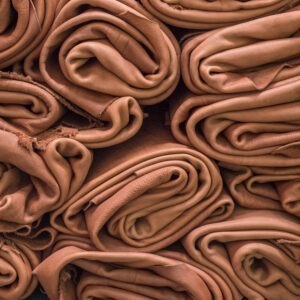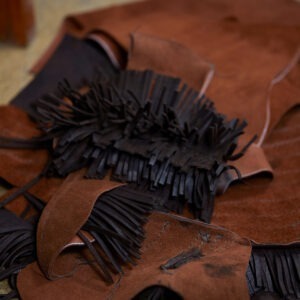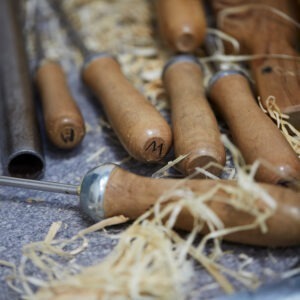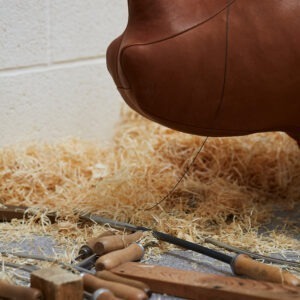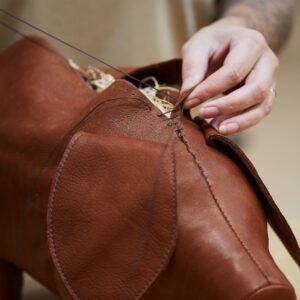How Our Animals are Made
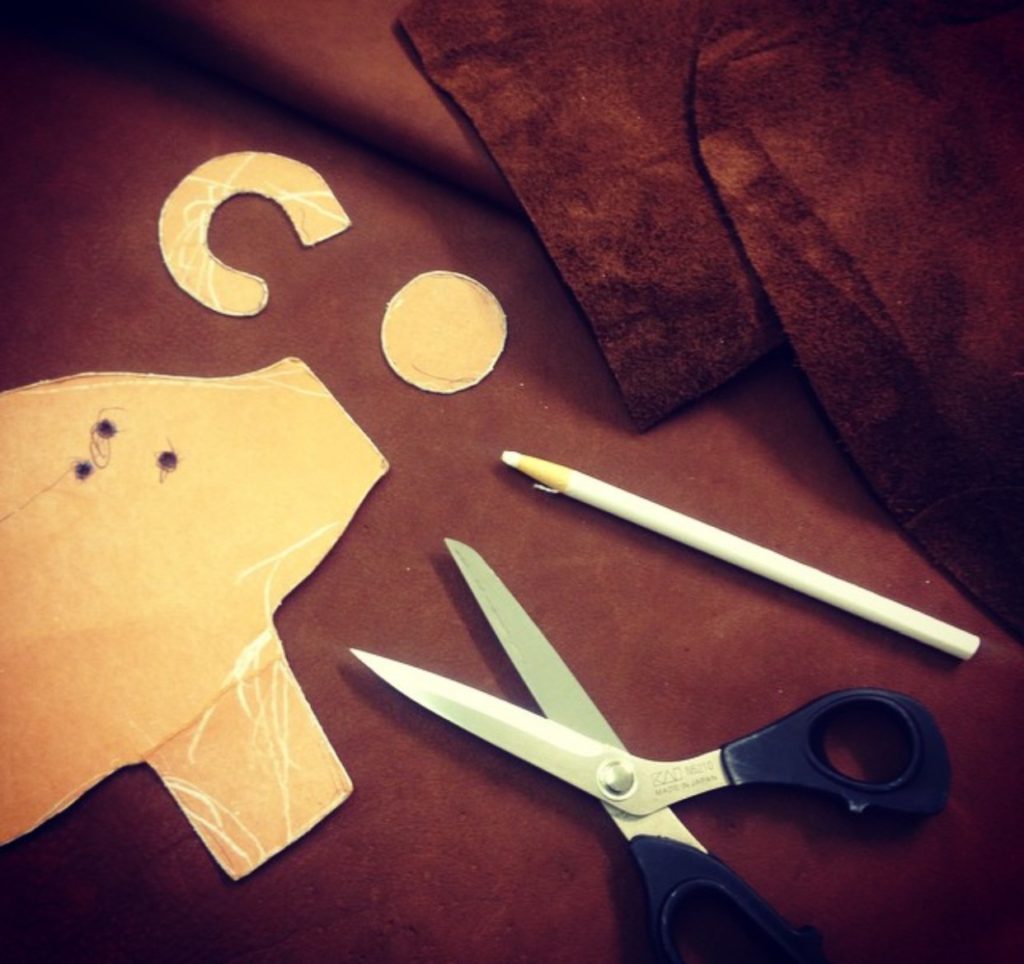
Leather Animals Designed and Manufactured in Lincolnshire, England by a team of artisans
Our Leather, full grain cowhide
Our handcrafted leather animals are made from top grain Cowhide leather – hides that have never been buffed or sanded, retaining the natural beauty and unique character of the skins. We do not hide the scars and wrinkles in the leather and aim to use the markings on our animals where we feel appropriate.
The leather is chrome-tanned and drummed to a specific recipe to meet our purpose. The resulting leather must have some stretch, but not too much, be of a certain thickness, but not too thick or thin, and have good fibre texture. We work closely with our UK leather supplier to achieve these results.
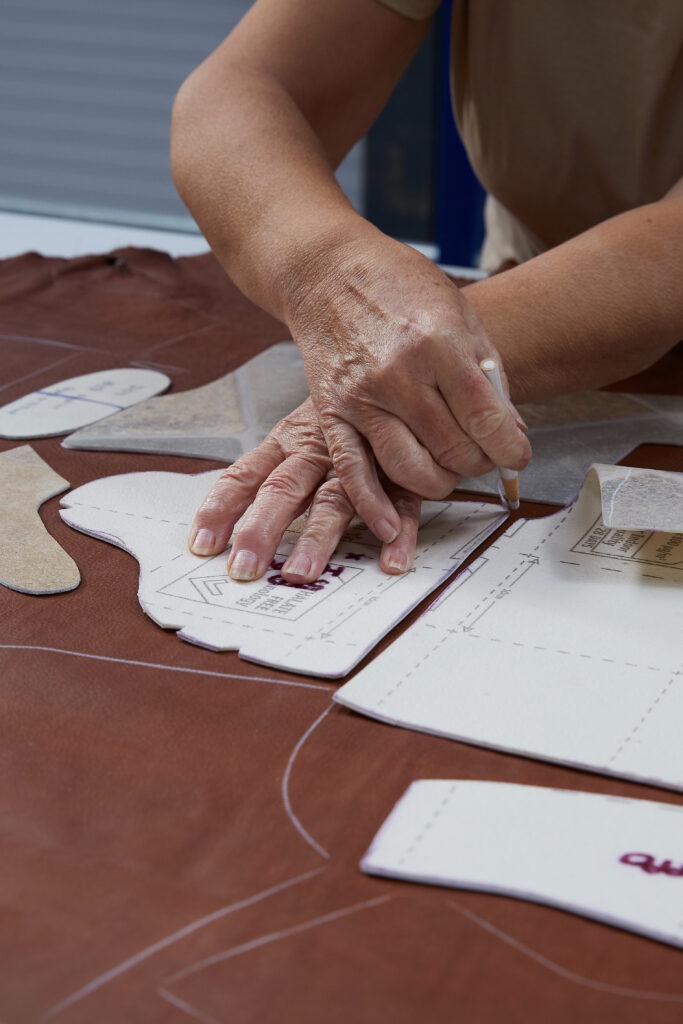
Pattern Laying
We use whole hides of approx 50sq feet and mark out the pattern for an animal from the same skin to ensure consistency of texture, strength, and markings. As no two skins are completely alike, each animal will have individual markings that add to its character. The differences in texture/strength from one skin to another also explains how the size of an animal can vary quite considerably despite coming from the same original pattern.
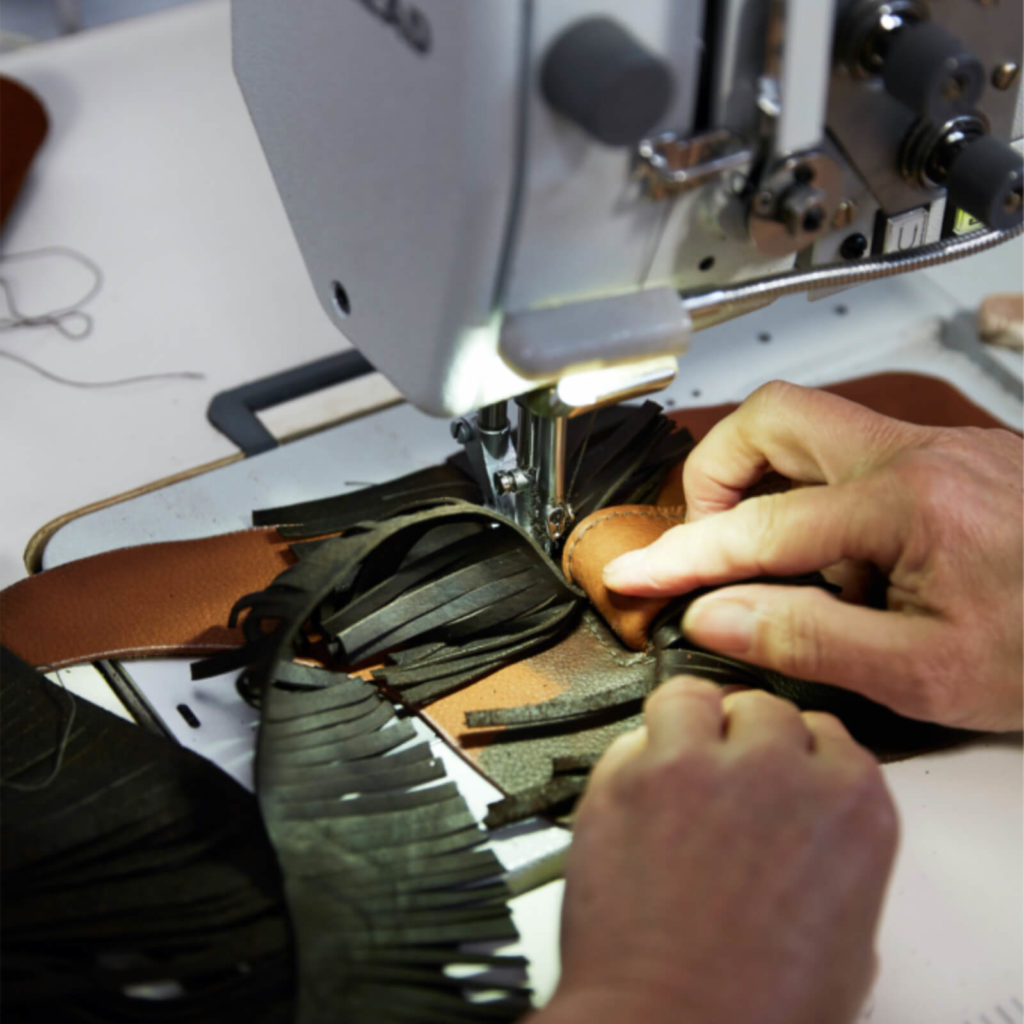
Product Machining
Once a hide has been marked out, the patterns are cut out and passed to our experienced machinists for sewing. The animals are “left open” along the backbone; this is where we insert the metal and wooden frame which gives the product structure and strength.

Product Assembly
A sturdy metal and wooden frame is placed inside the sewn leather, around which woodwool is tightly packed. Woodwool is used to create the features of the animal and to cover the frame. Woodwool is a natural softwood made from pine trees (Picea Abies). Typically it is sourced from Europe where there are extensive woodlands and replanting programs in place.
WARNING: misuse of the product may cause the frame to break which in turn will de stabilise the animal. The product is not designed as a toy for children. Nor is it designed to be sat on and “ridden” by an adult. The frame will however comfortably withstand use as a footrest, doorstop or paperweight dependant upon size and weight.
Assembly is the longest process in the production cycle and requires extensive in house training. It is physically demanding and requires an eye for detail along with patience and perseverance.
The animal is finished off by hand stitching along the “backbone” starting from the head end and finishing under the tail. You will see from close inspection that the stitching along the backbone is more open than other seams and this is due to the hand stitching process.
WARNING: keep your animal away from direct heat. If the woodwool becomes exposed due to damage it may catch fire.
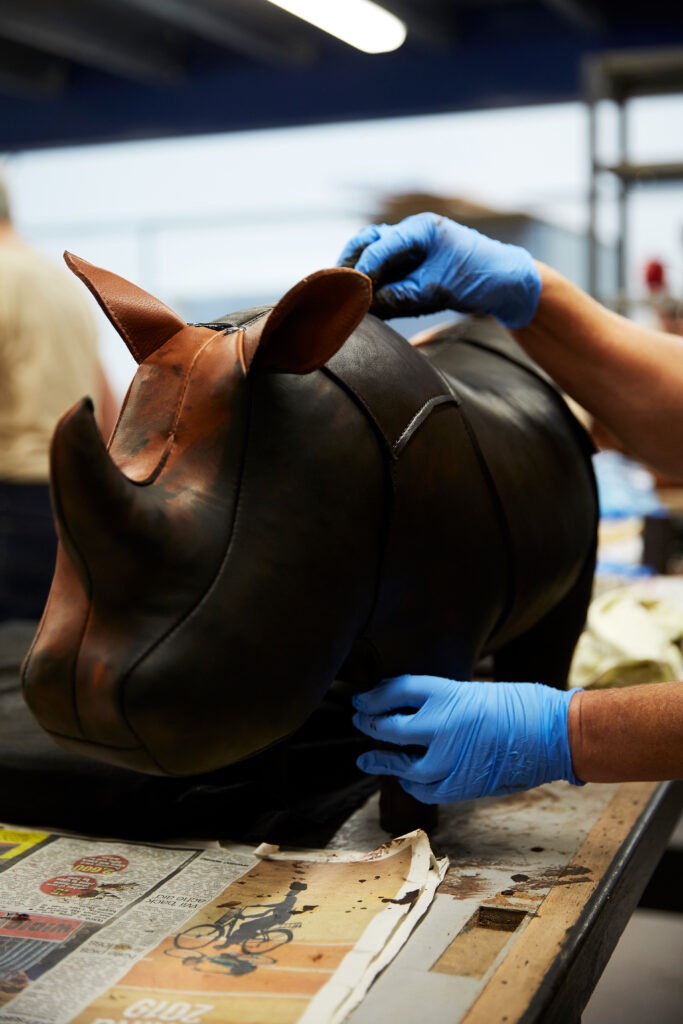
Staining and Polishing
Our leather is initally coloured a mid brown using aniline or semi-aniline techniques in which dye is soaked deep into the pores of the leather and the surface left unfinished. This differs from most leathers which are coloured using a process called pigmenting where a synthetic layer of colour is applied directly to the top of the skin giving the leather an even “flat” colour. This process masks all of the natural markings on the hide and removes the character of the leather. We like our animals to include natural markings and age with time and wear and tear.
After the assembly process each animal is hand stained mahogany brown with our own long standing recipe using a water based stain. This is followed by several products to seal the stain and nourish the leather. CAUTION: colour transfer is possible, particularly early on in the products life. To minimise this from happening, please apply wax polish (see below) to the product to build up a protective layer.
To keep the leather in good condition, we recommend the use of Nikwax Waterproofing wax which can be buffed up to give a lovely shine. You can purchase through our shop – Care and other Products. Alternatively, beeswax can be used to build up a protective layer. Warm it slightly so it becomes “greasy” and apply with a soft cloth.
The leather’s colouring will continue to develop and transform as the leather ages developing a lovely patina of its own.

